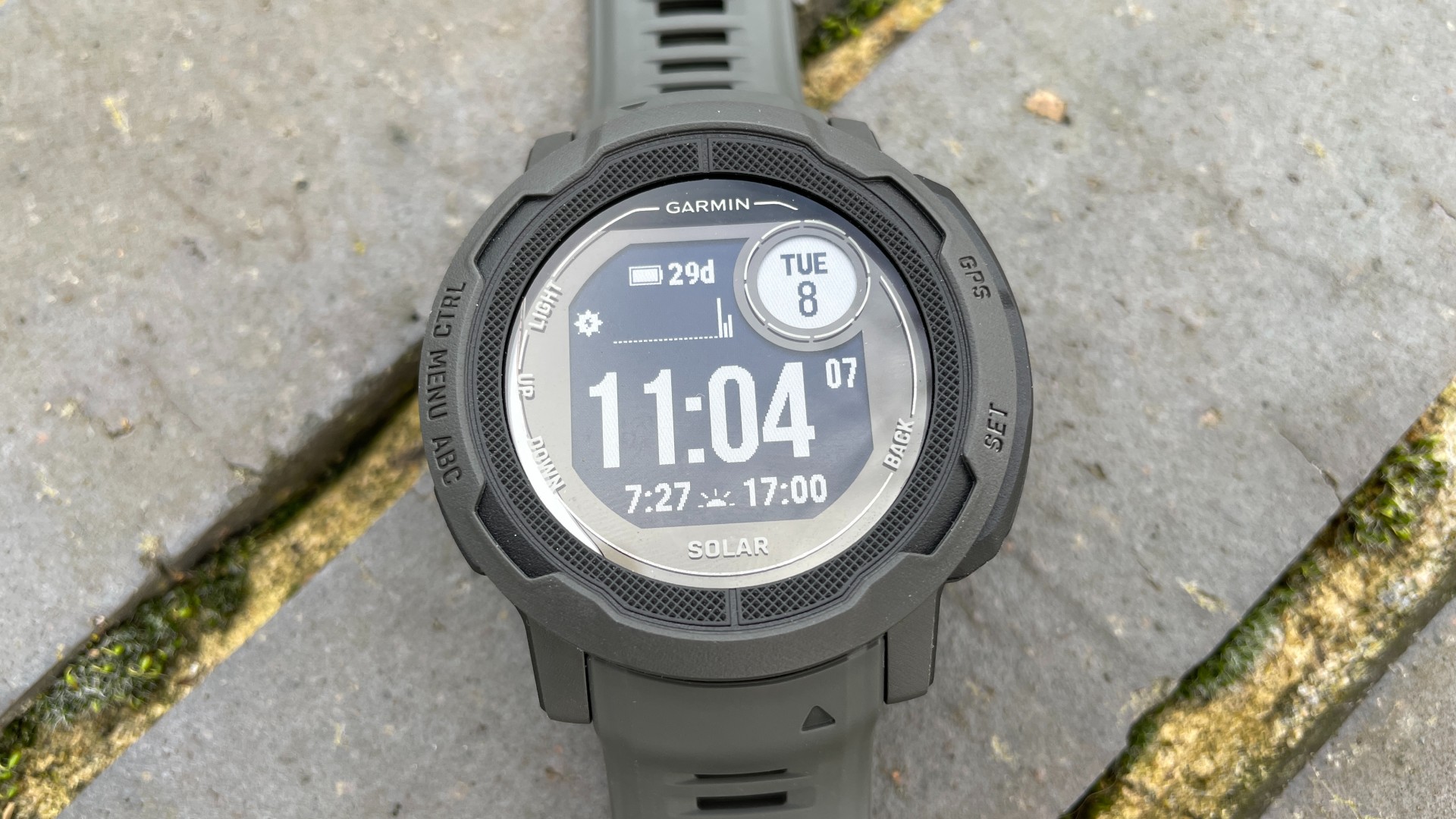Our Verdict
The Instinct 2’s design may divide opinion but its extensive set of features will delight all. There’s nothing that can rival what it offers as a multisport/adventure watch for £300, and the solar version also promises endless battery life for those in sunny climes.
For
- Improved sports tracking
- Impressive battery life
- Training analysis
Against
- Some GPS inaccuracy
- No maps or music
- Small screen
You can trust Coach
The Garmin Instinct line has a distinctive look – a rugged polymer case and a screen with a small circle display in addition to the main display – and brings many of the outdoor features of the high-end Fenix line into a cheaper watch.
Garmin has made upgrades to the second generation of the Instinct, which is also available in a smaller size, the Instinct 2S. Solar versions of both are available. It has a longer battery life and new features taken from Garmin’s other running watches, like training load analysis, VO2 max estimates and suggested workouts. This makes the Instinct 2 an attractive option offering all the key sports and activity tracking features in a hardy case built for adventure.
Garmin Instinct 2: Price And Availability
The Garmin Instinct 2 launched on 9th February 2022, with the Instinct 2 and 2S models costing £299.99 and the solar versions costing £389.99. Camo editions of the Instinct 2 and 2S are also available for £349.99, and there are special Surf and Tactical editions that cost £349.99 for standard watches and £429.99 for solar versions.
Recent updates
December 1, 2023: There are now regular sales and deals featuring the Garmin Instinct 2. In our extensive coverage of the best Black Friday Garmin deals in 2023 the best prices we tracked were $349.99 for the Instinct 2X Solar and £299.99 for the Instinct Crossover.
Design And Hardware
For all the impressive features it offers, whether you consider the Instinct 2 may depend on how much you appreciate the blocky, Casio G-Shock styling, though the range of colours available makes it more likely you’ll find one that suits. The small screen with its separate circular section is not as clear as the standard options on Garmin’s other devices, though it’s still easy to read.
Garmin has made key improvements to the new watch’s tech. The Instinct Solar was itself a notable update on the original Instinct, incorporating a new GPS chip and heart rate monitor alongside the solar panels. The Instinct 2/2S builds on the Instinct Solar, with further hardware upgrades.
For starters, Garmin has slimmed down the watch. The Instinct 2 is 14.5mm thick and the 2S is 13.3mm, compared with 15.3mm for the Instinct. The Instinct 2 has the same 45mm case size, while the 2S is 40mm. Although the screen size is the same across the generations at 0.9in (23mm) and 0.79in (20mm) for the 2S, the pixel density is higher on the new watch at 176 x 176 (156 x 156 on the 2S) compared with 128 x 128. I didn’t notice this increase in sharpness, but the Instinct 2’s screen is clear, and the improvement doesn’t affect battery life.
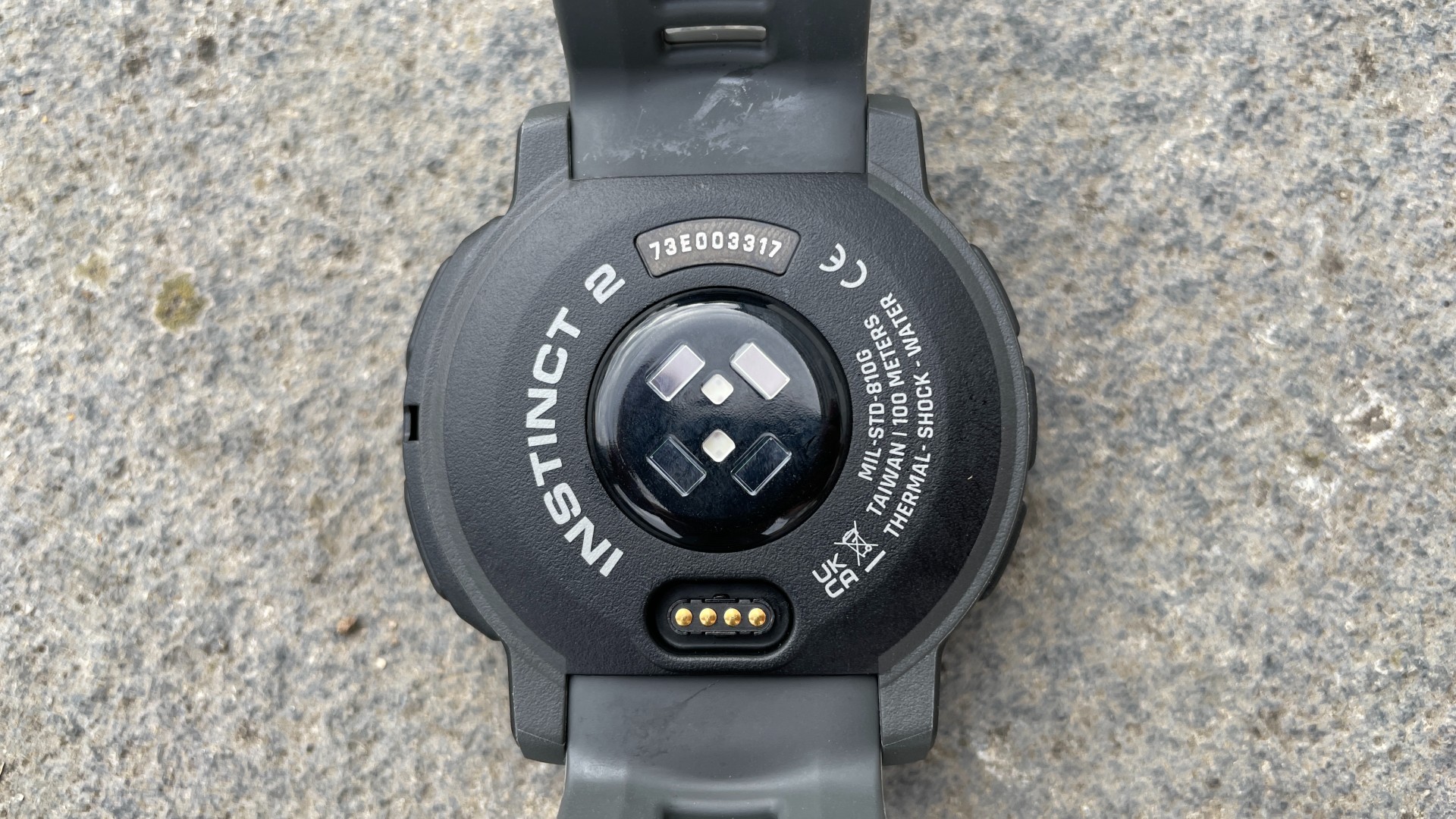
The Instinct 2 has an upgraded optical heart rate sensor, with Garmin’s Elevate Gen4, but it doesn’t get the multi-GNSS and multi-band GPS options that arrived on the Fenix 7 and Epix 2 watches earlier this year. It can track outdoor activities via GPS and another satellite system (you can choose between GLONASS and Galileo for the second). It is waterproof to 10 ATM, has an altimeter, barometer and compass, and can connect to a variety of external sensors via Bluetooth and ANT+, including cycling power meters.
Battery Life
One of the headline features of the Instinct 2 Solar is that it can run indefinitely in smartwatch mode in sunny conditions (28 days without solar). This is something I was unable to test during the grey British winter, but the battery life still impressed – even when spending most of my time under cloud cover. It lasted me two weeks of heavy use, running outside almost every day, along with tracking some cycling and indoor workouts.
The GPS battery life of the watch is 30 hours, or 48 with solar. The original Instinct Solar also offers 30 hours of GPS battery life, but this increases only to 38 with solar, and in smartwatch mode it tops out at 24 days or 54 with solar. The original Instinct lasted only 14 days in smartwatch mode and had 16 hours of GPS battery life.
Even if you opt for the standard version of the Instinct 2 you are getting a long-lasting watch with a battery-saving mode that can extend its life to 65 days. The expedition activity mode can track for 32 days, and using the battery-saving GPS mode sees the watch last 70 hours. Adding solar on top makes the watch everlasting in the right conditions, though I wouldn’t say it’s essential if you’re looking to save the £90 by buying the standard Instinct 2.
Sports Tracking
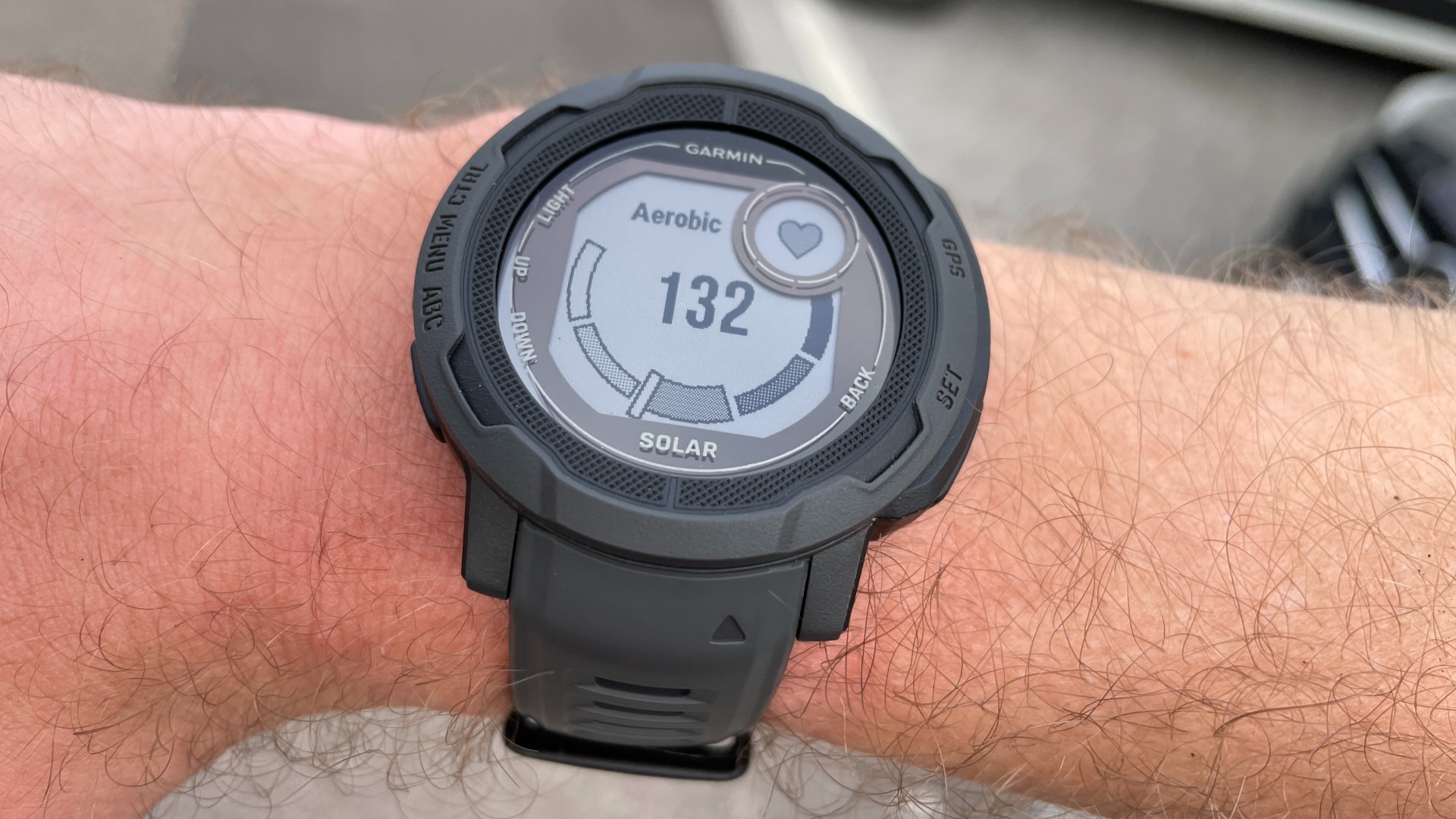
I have been using the Instinct 2 Solar alongside the Garmin Epix 2 for the past three weeks, tracking all my regular training as well as my daily activity and sleep. During that time I’ve logged more than 250km of running with the watch, alongside regular yoga, a couple of strength sessions and some cycling.
The Instinct 2 largely impressed with its heart rate tracking.The watch is light and sits snugly on the wrist, helping it to get a good reading. While it wasn’t infallible, sometimes spiking during runs and lagging behind a chest strap’s readings during interval sessions, you can, for the most part, use the optical sensor to record and guide your training.
However, if you want the best accuracy, you need to pair it with an external heart rate monitor – and given the Instinct 2 offers Garmin’s training analysis and VO2 max estimates, it’s worth ensuring you have accurate data feeding into these features. The analysis the watch offers isn’t as detailed as on pricier Garmin options, like the Forerunner 745 and 945, or Fenix 7, but it will say if your training is productive, give an overall estimate of your training load and advise on recovery time.
It also uses this analysis to provide daily workout suggestions designed to ensure your training is balanced between easy and hard efforts, so you continue to get fitter without overdoing it. While the training suggestions are not as effective as getting a plan from a coach, or mapping out training yourself with enough research, they will get you fitter without you having to think about it too much.
The Instinct 2 is a full multisport watch with a dedicated sports mode, and though it didn’t have Garmin’s Track Run mode at the time of testing, this is due in a future firmware update.
I find it a shame that Garmin did not upgrade the GPS accuracy on the Instinct 2 by at least offering multi-GNSS tracking. I’ve found this a useful upgrade on the Fenix 7 and Epix 2 watches, and although the Instinct 2’s GPS tracking was largely fine, it did have noticeable wobbles. When I ran a route with several loops it would often cut corners or add a considerable amount of distance, and when under tree cover or among tall buildings the tracks were less accurate than on the Epix 2.
It’s not a huge gripe, because multi-GNSS support is still a feature that’s mostly restricted to more expensive watches – but I expect it to become more common in the future.
Navigation
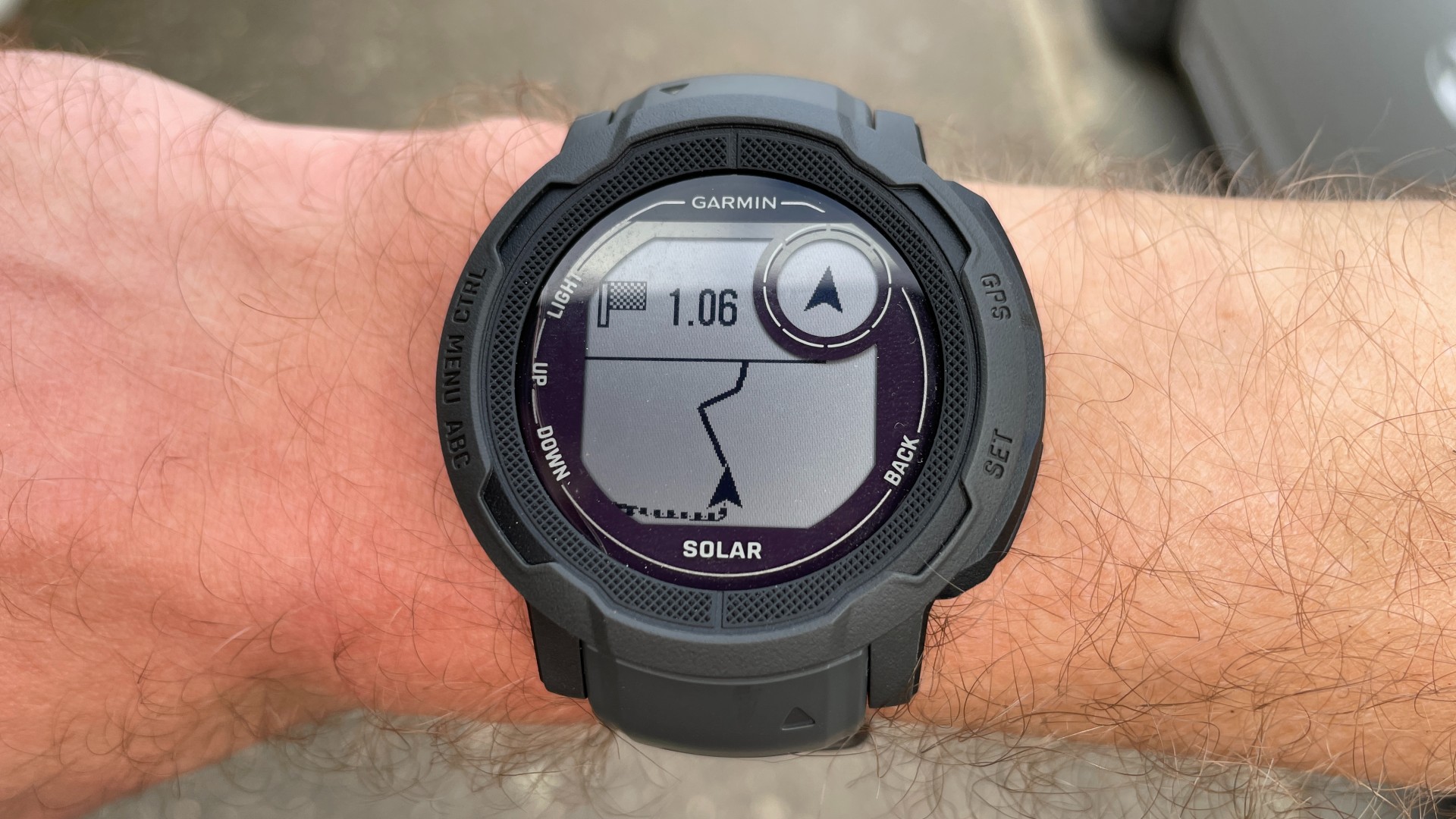
While the Instinct 2 doesn’t offer the full maps you get on Garmin’s higher-end watches, it does offer breadcrumb directions and useful features like an elevation plot of your route. There is also TracBack, which can guide you back to the start of your route via the way you came. You can route directly to a set of co-ordinates or saved location: this will just give you a pointer in that direction rather than a line to follow.
While the screen is smaller and less clear than on other watches, I found it easy to follow routes on the Instinct 2, and though its navigation features aren’t as extensive as on more expensive Garmins, it gets the job done in guiding you from A to B.
Smart Features
The Instinct 2 has more smart features than its design might suggest. It has weather forecasts and will display notifications from your phone, and the Solar edition of the watch can make NFC payments via Garmin Pay. The Instinct 2 now links to Garmin’s Connect IQ store so you can get third-party apps, though the range of apps available is small. It does lack music storage, which you can get on the Garmin Forerunner 245 Music for the same price as the Instinct 2.
Activity And Sleep Tracking
The Instinct 2 records all the usual daily activity metrics you get on fitness trackers like steps, calories burned and stairs climbed, and adds health features, such as menstrual cycle tracking, intensity minutes tracking and a fitness age estimate. Plus, there is Garmin’s Body Battery measurement, and advanced sleep tracking with sleep stages and a score. All this is viewable on the watch via the glances interface that’s used across the rest of Garmin’s watches, though the glances are less bright and clear on the Instinct’s monochrome screen.
In particular, the sleep tracking widget isn’t as easy to use as those on Garmins with colour screens (which colour-code the different stages of your rest), but it’s still a useful addition. However, during my testing the Instinct 2 produced the usual Garmin sleep tracking performance, in that it recorded me falling asleep slightly earlier than I did and then missed some time when I was awake during the night – so it overestimated how much I slept in total. I found that it was sometimes bulky to wear at night and had to take it off to sleep comfortably.
Should You Buy It Or Something Else?
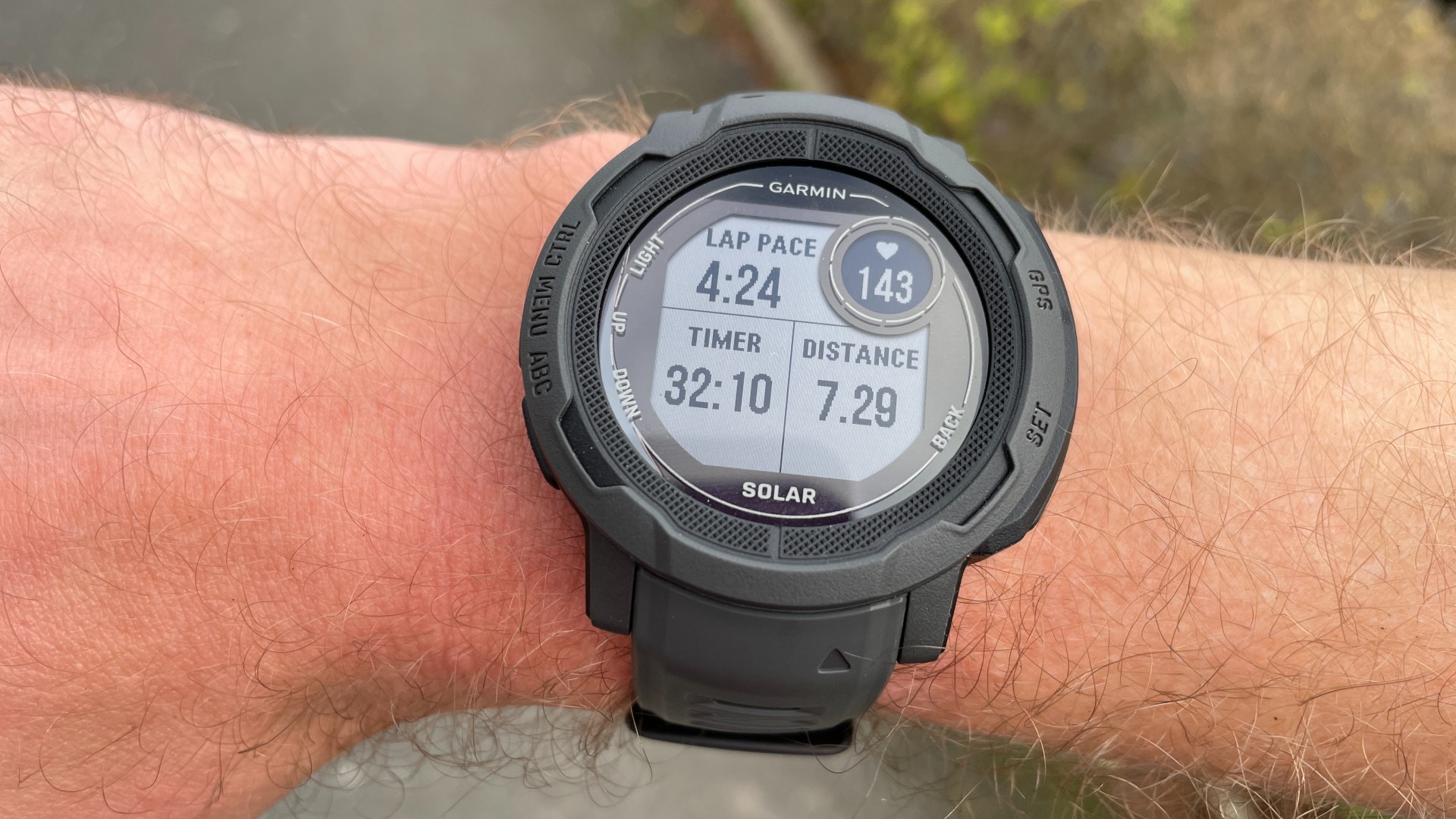
The additions Garmin has made to the Instinct 2 make it one of the most full-featured watches available for under £300, and there is also the option to extend its battery life significantly by paying £90 for the Solar version, which could be worthwhile if you live in a place blessed with plenty of sunshine.
Some people, myself included, will prefer the sleeker designs of the Forerunner watches in Garmin’s range, just as others will favour the chunky, longer-lasting Instinct. Now they can pick it up without losing any key features compared with the Forerunner watches, especially in relation to training analysis.
The Instinct offers a Fenix-like experience at a lower cost than the Fenix 7, covering the key tracking features on the watch while losing enjoyable bonuses like full maps, more extensive training analysis, better GPS accuracy, and music storage and streaming.
The Instinct 2 fares well in comparison with watches at its price, too. The Coros Apex is a similarly full-featured device for under £300, and the Forerunner 245 Music skews more towards running and smarts for the same price, offering music but less battery life and no multisport mode. But the features packed inside the Instinct 2’s distinctive frame represent great value.

Nick Harris-Fry is a journalist who has been covering health and fitness since 2015. Nick is an avid runner, covering 70-110km a week, which gives him ample opportunity to test a wide range of running shoes and running gear. He is also the chief tester for fitness trackers and running watches, treadmills and exercise bikes, and workout headphones.
